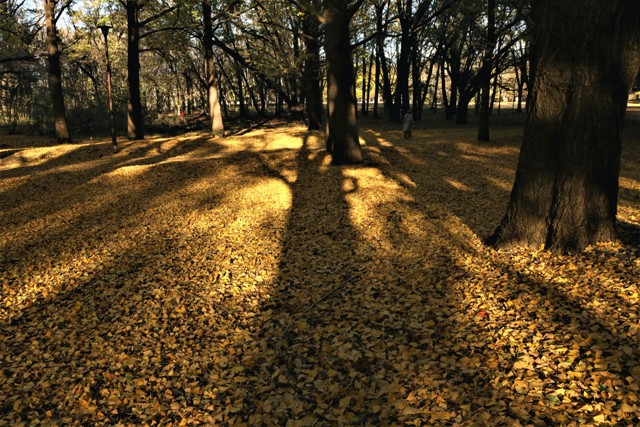It's starting to feel more like early winter in Tokyo. The leaves on the urban trees have turned brown, red and yellow. I recently enjoyed a stroll at Nogawa Park in the western suburb of Tokyo. Yellow-colored fallen ginkgo leaves covered the ground of the park. They were shining golden yellow from the sunlight. It was so beautiful.
To get to Nogawa Park, the nearest station is Tama on the Seibu-Tamagawa line. The Tamagawa line is a short local route. Connecting Musashi-Sakai on the JR East Chuo Line and Koremasa near Tama River, the operating length is only 8 kilometers. My vehicle was the EMU New-101 series. This model was launched in 1979, and had been operated on Seibu's trunk lines such as the Ikebukuro line for over three decades. It was then moved to the Tamagawa line in 2010. The body color of the New-101 series was white at that time.
Later in 2017 and 2018, there were various changes in the color designs of the New-101 series. New designs are Izu-Hakone Raiway color, Akaden color, Ohmi Railway color and "Seibu revival color". The former three were taken from the trains of Seibu's sister railway companies; meanwhile, "Seibu revival color" is the original yellow color of the New-101 series, when it debuted in 1979. It's a bit of a complicated coloring history of the New-101 series, but I hope that you understand the outline.
The fallen leaves and the nostalgic train... I really enjoyed "the yellow colors" on the Seibu-Tamagawa line.

